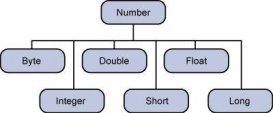本文实例总结了Java常用加密算法。分享给大家供大家参考,具体如下:
项目中第一次深入地了解到加密算法的使用,现第一阶段结束,将使用到的加密算法和大家分享一下:
首先还是先给大家普及一下常用加密算法的基础知识
基本的单向加密算法
BASE64 严格地说,属于编码格式,而非加密算法
MD5(Message Digest algorithm 5,信息摘要算法)
SHA(Secure Hash Algorithm,安全散列算法)
复杂的加密算法
RSA(算法的名字以发明者的名字命名:Ron Rivest, AdiShamir 和Leonard Adleman)
DES/3DES(Digital Signature Algorithm,数字签名)
国密算法
SM2/SM4(是由国家密码管理局编制的一种商用密码分组标准对称算法)
使用方法:
base64
|
1
2
3
4
5
6
7
8
|
public static byte[] encode2Base64(byte[] bytes) { byte[] bts = Base64.encodeBase64(bytes); return bts;}public static byte[] decode2Base64(String str) { byte[] bts = Base64.decodeBase64(str); return bts;} |
MD5
|
1
2
3
4
5
6
7
8
9
|
public static String md5(String str) { try { MessageDigest digest = MessageDigest.getInstance("MD5"); return new String(digest.digest(str.getBytes())); } catch (NoSuchAlgorithmException e) { e.printStackTrace(); } return "";} |
SHA-1
|
1
2
3
4
5
6
7
8
9
10
|
public static byte[] sha1ToBytes(String str) { try { MessageDigest digest = MessageDigest.getInstance("SHA-1"); byte[] bts = digest.digest(str.getBytes()); return bts; } catch (Exception e) { e.printStackTrace(); } return null;} |
DES/3DES
|
1
2
3
4
5
6
7
8
9
10
11
12
13
14
15
16
17
18
19
20
21
22
23
24
25
26
27
28
29
30
31
32
33
|
public static byte[] encryptMode(String keyStr, byte[] src) { try { // 生成密钥 SecretKey deskey = new SecretKeySpec(keyStr.getBytes(), "DESede"); // 加密 Cipher c1 = Cipher.getInstance("DESede"); c1.init(Cipher.ENCRYPT_MODE, deskey); return c1.doFinal(src); } catch (java.security.NoSuchAlgorithmException e1) { e1.printStackTrace(); } catch (javax.crypto.NoSuchPaddingException e2) { e2.printStackTrace(); } catch (java.lang.Exception e3) { e3.printStackTrace(); } return null;}public static byte[] decryptMode(String keyStr, byte[] src) { try { SecretKey deskey = new SecretKeySpec(keyStr.getBytes(), "DESede"); // 解密 Cipher c1 = Cipher.getInstance("DESede"); c1.init(Cipher.DECRYPT_MODE, deskey); return c1.doFinal(src); } catch (java.security.NoSuchAlgorithmException e1) { e1.printStackTrace(); } catch (javax.crypto.NoSuchPaddingException e2) { e2.printStackTrace(); } catch (java.lang.Exception e3) { e3.printStackTrace(); } return null;} |
RSA
|
1
2
3
4
5
6
7
8
9
10
11
12
13
14
15
16
17
18
19
20
21
22
23
24
25
26
27
28
29
30
31
32
33
34
35
36
37
38
39
40
41
42
43
44
45
46
47
48
49
50
51
52
53
54
55
56
57
58
59
60
61
62
63
64
65
66
67
68
69
70
71
72
73
74
75
76
77
78
79
80
81
82
83
84
85
86
87
88
89
90
91
92
93
94
95
96
97
98
99
100
101
102
103
104
105
106
107
108
109
110
111
112
113
114
115
116
117
118
119
120
121
122
123
124
125
126
127
128
129
130
131
132
133
134
135
136
137
138
139
140
141
142
143
144
145
146
147
148
149
150
151
152
153
154
155
156
157
158
159
160
161
162
163
164
165
166
167
168
169
170
171
172
173
174
175
176
177
178
179
180
181
182
183
184
185
186
187
188
189
190
191
192
193
|
/*** 初始化公密钥* * @return* @throws Exception*/public static Map<String, Object> initKey() throws Exception { KeyPairGenerator kpGenerator = KeyPairGenerator.getInstance("RSA"); kpGenerator.initialize(2048); KeyPair keyPair = kpGenerator.generateKeyPair(); // 存储公钥 PublicKey publicKey = keyPair.getPublic(); // 存储密钥 PrivateKey privateKey = keyPair.getPrivate(); Map<String, Object> keyMap = new HashMap<String, Object>(); keyMap.put(PUBLIC_KEY, publicKey); keyMap.put(PRIVATE_KEY, privateKey); return keyMap;}/*** 取出公钥* * @param keyMap* @return*/public static String getPublicKey(Map<String, Object> keyMap) { Key key = (Key) keyMap.get("RSAPublicKey"); return encode2Base64(new String(key.getEncoded()));}/*** 取出密钥* * @param keyMap* @return*/public static String getPrivateKey(Map<String, Object> keyMap) { Key key = (Key) keyMap.get("RSAPrivateKey"); return encode2Base64(new String(key.getEncoded()));}/*** 公钥加密* * @param data* @param publicKey* @return* @throws Exception*/public static String encryptByPublicKey(String data, RSAPublicKey publicKey) throws Exception { Cipher cipher = Cipher.getInstance("RSA"); cipher.init(Cipher.ENCRYPT_MODE, publicKey); // 模长 int key_len = publicKey.getModulus().bitLength() / 8; // 加密数据长度 <= 模长-11 String[] datas = splitString(data, key_len - 11); String mi = ""; // 如果明文长度大于模长-11则要分组加密 for (String s : datas) { mi += bcd2Str(cipher.doFinal(s.getBytes())); } return mi;}/*** 私钥加密* * @param data* @param privateKey* @return* @throws Exception*/public static String encryptByPrivateKey(String data, RSAPrivateKey privateKey) throws Exception { Cipher cipher = Cipher.getInstance("RSA"); cipher.init(Cipher.ENCRYPT_MODE, privateKey); // 模长 int key_len = privateKey.getModulus().bitLength() / 8; // 加密数据长度 <= 模长-11 String[] datas = splitString(data, key_len - 11); String mi = ""; // 如果明文长度大于模长-11则要分组加密 for (String s : datas) { mi += bcd2Str(cipher.doFinal(s.getBytes())); } return mi;}/*** 私钥解密* * @param data* @param privateKey* @return* @throws Exception*/public static String decryptByPrivateKey(String data, RSAPrivateKey privateKey) throws Exception { Cipher cipher = Cipher.getInstance("RSA"); cipher.init(Cipher.DECRYPT_MODE, privateKey); // 模长 int key_len = privateKey.getModulus().bitLength() / 8; byte[] bytes = data.getBytes(); byte[] bcd = ASCII_To_BCD(bytes, bytes.length); System.err.println(bcd.length); // 如果密文长度大于模长则要分组解密 String ming = ""; byte[][] arrays = splitArray(bcd, key_len); for (byte[] arr : arrays) { ming += new String(cipher.doFinal(arr)); } return ming;}/*** ASCII码转BCD码* */public static byte[] ASCII_To_BCD(byte[] ascii, int asc_len) { byte[] bcd = new byte[asc_len / 2]; int j = 0; for (int i = 0; i < (asc_len + 1) / 2; i++) { bcd[i] = asc_to_bcd(ascii[j++]); bcd[i] = (byte) (((j >= asc_len) ? 0x00 : asc_to_bcd(ascii[j++])) + (bcd[i] << 4)); } return bcd;}public static byte asc_to_bcd(byte asc) { byte bcd; if ((asc >= '0') && (asc <= '9')) bcd = (byte) (asc - '0'); else if ((asc >= 'A') && (asc <= 'F')) bcd = (byte) (asc - 'A' + 10); else if ((asc >= 'a') && (asc <= 'f')) bcd = (byte) (asc - 'a' + 10); else bcd = (byte) (asc - 48); return bcd;}/*** BCD转字符串*/public static String bcd2Str(byte[] bytes) { char temp[] = new char[bytes.length * 2], val; for (int i = 0; i < bytes.length; i++) { val = (char) (((bytes[i] & 0xf0) >> 4) & 0x0f); temp[i * 2] = (char) (val > 9 ? val + 'A' - 10 : val + '0'); val = (char) (bytes[i] & 0x0f); temp[i * 2 + 1] = (char) (val > 9 ? val + 'A' - 10 : val + '0'); } return new String(temp);}/*** 拆分字符串*/public static String[] splitString(String string, int len) { int x = string.length() / len; int y = string.length() % len; int z = 0; if (y != 0) { z = 1; } String[] strings = new String[x + z]; String str = ""; for (int i = 0; i < x + z; i++) { if (i == x + z - 1 && y != 0) { str = string.substring(i * len, i * len + y); } else { str = string.substring(i * len, i * len + len); } strings[i] = str; } return strings;}/*** 拆分数组*/public static byte[][] splitArray(byte[] data, int len) { int x = data.length / len; int y = data.length % len; int z = 0; if (y != 0) { z = 1; } byte[][] arrays = new byte[x + z][]; byte[] arr; for (int i = 0; i < x + z; i++) { arr = new byte[len]; if (i == x + z - 1 && y != 0) { System.arraycopy(data, i * len, arr, 0, y); } else { System.arraycopy(data, i * len, arr, 0, len); } arrays[i] = arr; } return arrays;} |
以上就是本次项目中用到的加密算法,需要注意的是编码格式一定要双方统一 ,如果不一致则加解密不成功。
希望本文所述对大家java程序设计有所帮助。
原文链接:http://blog.csdn.net/chenbing81/article/details/51914151















